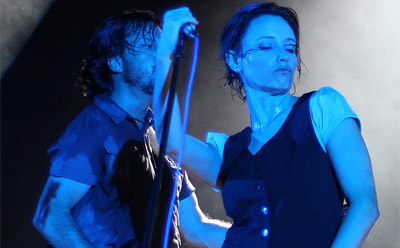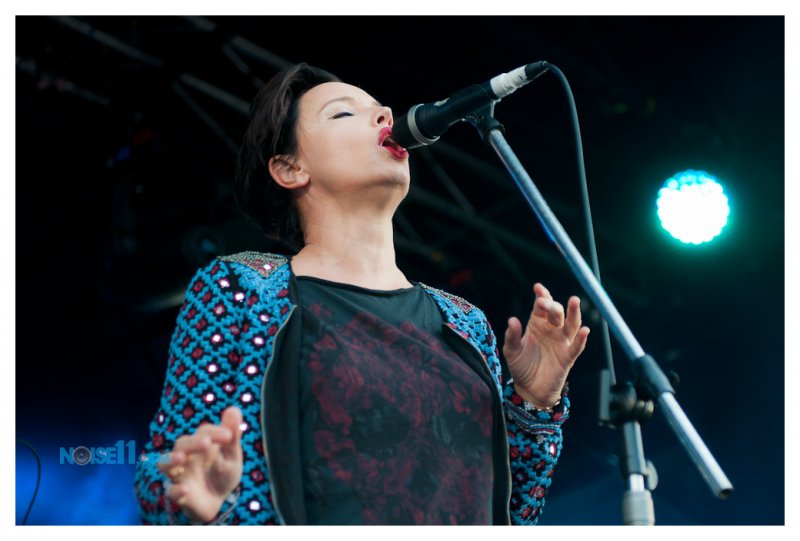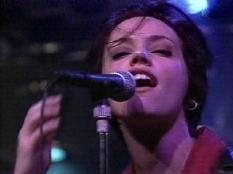Source(googole.com.pk)
The Animals were probably the most creative among the British bands that reinterpreted the blues tradition for the young punks of the 1960s. They turned rhythm'n'blues into the epic call to arms for masses of frustrated teenagers. In their hands, the blues became an anthemic sound of rebellion. Each song, whether original or cover, gains an epic tone, thanks to Price's keyboards and Burdon's vocals, and thanks to a feverish execution. Very few bands captured the spirit of the time as the Animals did.
With his solo albums recorded in California, Eric Burdon continued his Homeric task of singing the feats of his generation, except that the focus became the hippy civilization of San Francisco.
The Animals, from Newcastle, Northern England, were consummate champions of rhythm & blues.
They formed in 1963, from the fusion between two rival groups, one headed by bassist Chas Chandler, the other headed by organist Alan Price, stage veteran, former jazz pianist and disciple of Ray Charles. Eric Burdon, who had played with Price until 1962, was hired as the singer. The Kontours changed their name first to The Alan Price Combo, after adding drummer John Steel, and then to The Animals, after adding guitarist Hilton Valentine.
As often happens with blues bands, all members were striking interpreters. But what rendered the Animals unique, first in Newcastle and then around the world, was the wild exuberance of their performances. The Animals didn't just play the blues, they used it as a detonating device for orgies of riffs and roars that put Howling Wolf and Little Richard to shame. The fact that they formed in a little suburban town far away from commercial attention, close enough to Liverpool to be infected with the fever of the Merseybeat, yet sufficiently distant not to be dulled by the Pacemakers, and then by the Beatles, perhaps favored their artistic freedom.
The Animals burst on the scene of British rhythm and blues with rebellious impetuosity. In this they differed from the Yardbirds or the Rolling Stones. Whereas the Yardbirds were diligent disciples and innovators of the genre, and the Stones probed into the most exciting aspects of black music, the Animals rushed to the classics with the passion and the savagery of hoodlums. Rhythm, electricity and melody were redefined by the energy of these five youths. Their talent at their instruments, and Burdon's voice, were expressed in a manner diametrically opposed to that of, say, the Yardbirds. With the Animals was born the concept of rock by a great instrumentalist or singer, not so much because of virtuosity, but because of passion, the visceral quality. And most certainly the singer Eric Burdon was emblematic of this new approach. With that voice he could have sung opera by Verdi, instead he perspired sweat and shed tears for the blues. All of this was calculated to make the Animals mesmerizing to see and hear.
The Animals anticipated half the history of rock and roll, from the garage rock of the 60s to 70s punk.
As documented in Club Au Go-Go (Get Back), a live recording from 1963, their repertory was initially made up of soul tunes, skiffle, jazz and rhythm and blues, a mix of Chris Barber, Lonnie Donegan and Bo Diddley, carefully selected for them by their producer, Mickey Most.
Brought to London's great circus in 1964, the Animals proceeded to appropriate the blues, but within a few months their style changed. The Animals were not traditional interpreters, because they revised their covers by imposing a rebel style, at times even grandiose, that completely upset the slant of the tune. In their hands, many American blues classics ceased to be anthems of African American suffering; they became anthems of young British suffering. The majestic side of their interpretations took over from the wild side. Their songs went from cries of pain to anthems of rebellion. Those were the years of Dylan's generational anthems and the Animals conformed, but from a blues perspective. Most of the merit was Price's, able to arrange the songs in a way that made the original version easily forgettable and stressed Burdon's awesome voice.
The Animals debuted in 1964 with two songs, in March and June respectively, that also appeared on Bob Dylan's first album: House Of The Rising Son, reborn by a solemn riff by Valentine and Baby Let Me Take You Home animated by a frenetic rhythm.
House Of The Rising Sun was a unique event in their career. For once they adapted folk, instead of blues, to rock, by borrowing a popular song, refining its melody and accentuating its beat with the organ. Introduced by the guitar's intensely religious chords, the voice "preaches" vehemently over the rhythm sustained by the drums, while the organ mimics a gospel service by stealing some of Bach's phrasings.
Both songs made their mark on the times, and thanks to those hits the band was able to obtain permission to record a couple of EPs with rearranged blues tunes. Don't Let Me Be Misunderstood (January 1965, already a hit by Nina Simone), branded that winter, and most likely remains to this day their most enthralling interpretation. The gospel essence of the original version became a strong invective against society of the 60s. Their first album, Animals (MGM, 1964), is a case history of the distinctiveness of their style in the reinterpretation of the blues.
Their technique consisted of rhythm acceleration to render their songs acceptable to the unrestrained dance music of teens. Gonna Send You Back To Walker is a stolid jumping boogie treated in such fashion. In I'm Crying the technique is pushed to excess, enlivening almost to the point of hysteria an otherwise whining blues, and adorning it with couterpointing choruses. How far such practice can go is demonstrated with a dizzy gospel dance that wears itself out in less than two minutes. Another technique was the exploitation of Burdon's extraordinary voice, to animate the song with great emotional peaks: a struggling mechanical beginning grows bit by bit in linear emphasis, and then deflates, as in a solemn hymn, driven by the majestic sound of the organ. Baby Let Me Take You Home pulls the rubber band from both ends with a series of syncopated phrases, and then releases it with a great refrain, underlined by the organ, exuberantly repeated by the guitar, and concluded by a frenetic chorale. The same progressive sensibility strikes in She Said Yeah. Don't Let Me Be Misunderstood, lead by Burdon in a mournful tone, lifts itself up abruptly during the emphatic refrain only to descend again into depressive colloquialism. Bury My Body presents the same atmosphere of suspense, the same sensation of muffled crying just before Burdon delivers with severity the key verse ("lead me, Jesus, lead me") over the guitar chords.
Although Most had always opposed the idea, the band's natural evolution lead to their own material, to write their own generational anthems instead of transforming other people's material into music for their own generation. Preserving the blues character and adding to it a British inflection and current themes, their sound became even more dramatic. We`ve Gotta Get Out Of This Place (September 1965, written by Barry Mann and Cynthia Weil) and It's My Life, captured like few others the mood of British kids tired of the conformist life.
Their technique of rhythmic and melodic progression reached complete maturity in these anthems. Price refined the art of the arrangement while Burdon's singing became more fluid and expressive. In We`ve Gotta Get Out of This Place, the vibrant baritone that paints the bleak city ambiance ("in this dirty old heart of the city/ where the sun refuse to shine") goes gradually from disorganized adolescent mode to a chocked cry, sustained by the organ and by conventional vocal counterpoint (yeah, yeah), to explode, at last, into the gospel-style impassioned angry refrain. It's My Life has a similarly dramatic opening with a progressive shifting of tone, in this case punctuated by guitar chords, up to the liberating explosion of the slogan "it's my life/ and I do what I want".
The albums of those years, Animals (Columbia, 1964), released in USA with the singles added, Animal Tracks (Columbia, 1965) and Animalisms (Decca, 1966), released in USA as Animalization (Polygram, 1966) contain, with some variants, a rich harvest of reworked blues tunes drawn from the repertories of at least three generations of blacks, from John Lee Hooker to Fats Domino and Ray Charles. Drawing on instinctive elementary rhythms, enhanced by their unique arrangements (among the novelties Clapping, accompanied only by clapping hands), the Animals pumped up the blues to ignite their audience. Burdon's determined vocal sallies startled the emotions by being both moving and exciting.
Despite a certain degree of success obtained in Great Britain and in the USA, in the summer of 1966 the band broke up, after the recording of four more 45s: Don't Bring Me Down (by Carol King), See See Rider, and best of all, Inside Looking Out and When I Was Young, were exceptional anticipations of hard rock.
Freed from Price's arrangements Burdon set aside his vocal refinement to concentrate on emotional resonance. Inside Looking Out exploits the mighty force of the blues with a resounding bass attack that mutates instantaneously into a decisive blare. The effect is rougher, but also exuberant. When I Was Young returns to the declamatory prelude formula, but once again underlined by low pulsations and at the instrumental apex of the refrain breaks through to a moment of chaos.
If their proto-punk existentialism never went beyond the provoking slogans they used as titles,their music alone was enough to take the measure of the restlessness of the times.
Their last LP, Animalism (MGM, 1966), released only in the USA, produced by a young Frank Zappa and with the band missing both Price and Steel, is an eccentric collage, anticipating which lines of development Burdon's music is going to take.
Best (ABCKO, 1973) is a great anthology of their career.
Right after the break-up Chandler scouted a young guitarist named Jimi Hendrix in Manhattan, and began his career of manager, alongside the career of one of the greatest musicians of the century.
Valentine released a solo album All In Your Head (1969). Soon after, in the midst of a religious crisis he abandoned the scene.
Eric Burdon built himself a custom made band and after a raw rhythm and blues LP sought refuge in California, attracted by the psychedelic summer of San Francisco. Burdon captured the spirit of the times in two Latin accented 45s, Good Times (counterpointed by violins and with a "Zappan" intermezzo of crowds), and the potent anthem San Franciscan Nights, another one of his masterpieces. If those songs sealed the hippie season of 1967, the album Winds Of Change (MGM, 1967) was a panoramic poem reminiscent of Homer about alternative music.
After assimilating Indian music, LSD, the Monterey Festival, Zoot Money on keyboards and Andy Summers at the guitar, Burdon carved his definitive masterpiece, Twain Shall Meet (MGM, 1968), a collection of song-dissertations with very refined music, including the raga-jazz in Monterey and the Animals-style blues in White Houses. Two cosmic-psychedelic frenzies dominate the album: Sky Pilot, grand, bizarre music for space cowboys with supersonic dissonance and Scottish bagpipes, and We Love You Lil, a reprise of Lili Marlene twenty years later, a parable of war and love, complete with the desolate sounds of war, the tolling of bells and tragic vocalizations. This album consecrates Burdon as not only a poet of his generation but as the poet of the poets of his generation, a creative and conscientious musician.
In Everyone Of Us, released at the end of 1968, Burdon served up one more twenty minute long rave-collage, New York 63 - America 68, which along with the mighty White Houses confirmed his creative genius .
In those records, bringing to fruition the art of revision learned with the Animals, Burdon transformed rock, soul and country classics such as Paint It Black, River Deep Mountain High and Ring Of Fire into long and tormented acid trips.
Burdon went back to rhythm and blues with the ambitious double album Love Is (MGM, 1969), dominated by John Weider and Andy Summers' lead guitars, and inconclusive extended pieces, a collection of covers of rock classics (including a lengthy version of Zoot Money's The Madman Running Through The Fields).
His love for black music brought him to collaborate with the commercial group War on Eric Burdon Declares War, which produced compromising songs such as Spill The Wine (1970), Slippin Into Darkness and The World Is A Ghetto. Their second album The Black Man's Burdon displays long mesmerizing jams, almost avant-garde in style on Bare Back Ride and Pretty Colors. In the end Burdon recorded on his own, ever more rarely, but always affirming himself as a classy vocalist and at times producer, although those pieces sound like a renunciation of the role of the progressive music protagonist he had conquered on merit.
The original personnel of the Animals regrouped years later to record Before We Were So Rudely Interrupted (Jet, 1976), and then again for Ark (IRS, 1983), with Zoot Money on keyboards and all original material. Neither album found an audience, although they would have been considered masterpieces in the 60s
Baby Animals Music Baby Animals Pictures Wallpaper With Their Mothers Names Clipart Coloring Pages Cute Cartoon Photos

Baby Animals Music Baby Animals Pictures Wallpaper With Their Mothers Names Clipart Coloring Pages Cute Cartoon Photos

Baby Animals Music Baby Animals Pictures Wallpaper With Their Mothers Names Clipart Coloring Pages Cute Cartoon Photos

Baby Animals Music Baby Animals Pictures Wallpaper With Their Mothers Names Clipart Coloring Pages Cute Cartoon Photos
Baby Animals Music Baby Animals Pictures Wallpaper With Their Mothers Names Clipart Coloring Pages Cute Cartoon Photos

Baby Animals Music Baby Animals Pictures Wallpaper With Their Mothers Names Clipart Coloring Pages Cute Cartoon Photos

Baby Animals Music Baby Animals Pictures Wallpaper With Their Mothers Names Clipart Coloring Pages Cute Cartoon Photos

Baby Animals Music Baby Animals Pictures Wallpaper With Their Mothers Names Clipart Coloring Pages Cute Cartoon Photos

Baby Animals Music Baby Animals Pictures Wallpaper With Their Mothers Names Clipart Coloring Pages Cute Cartoon Photos

Baby Animals Music Baby Animals Pictures Wallpaper With Their Mothers Names Clipart Coloring Pages Cute Cartoon Photos

Baby Animals Music Baby Animals Pictures Wallpaper With Their Mothers Names Clipart Coloring Pages Cute Cartoon Photos

Baby Animals Music Baby Animals Pictures Wallpaper With Their Mothers Names Clipart Coloring Pages Cute Cartoon Photos

Baby Animals Music Baby Animals Pictures Wallpaper With Their Mothers Names Clipart Coloring Pages Cute Cartoon Photos

Baby Animals Music Baby Animals Pictures Wallpaper With Their Mothers Names Clipart Coloring Pages Cute Cartoon Photos

Baby Animals Music Baby Animals Pictures Wallpaper With Their Mothers Names Clipart Coloring Pages Cute Cartoon Photos

No comments:
Post a Comment